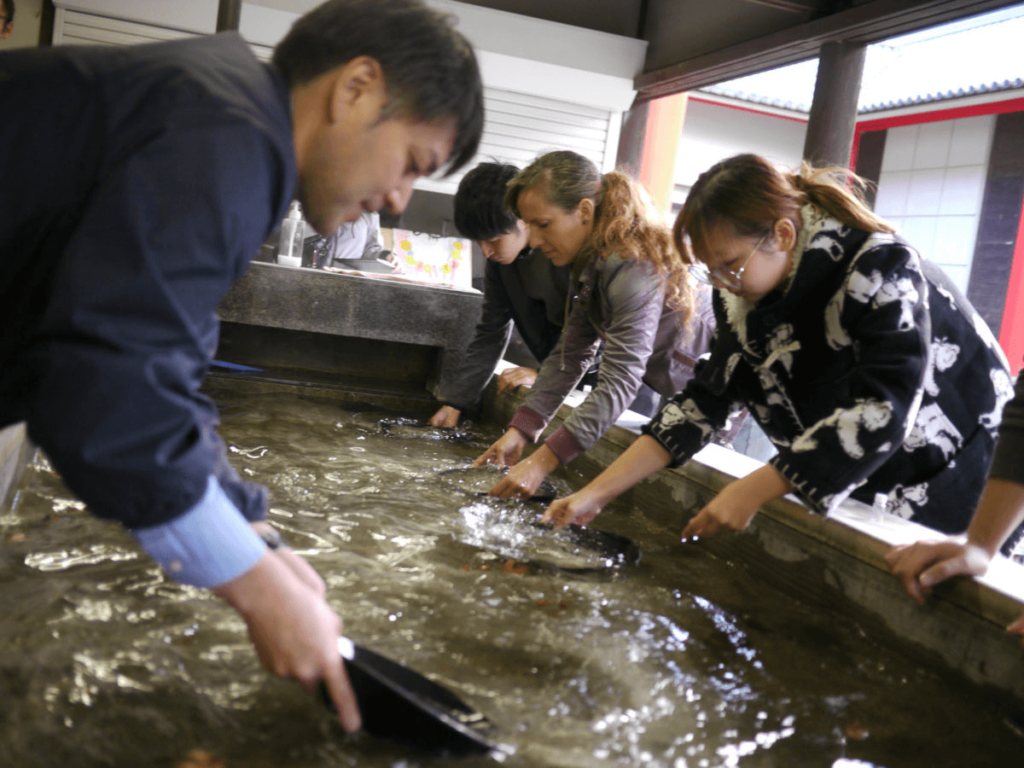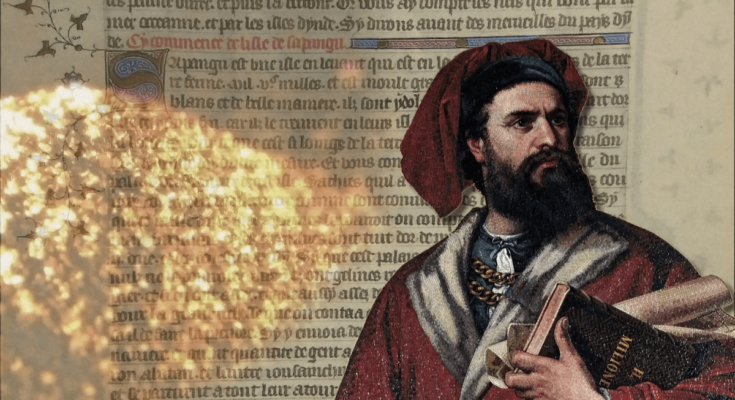The famous explorer, Marco Polo, is well known in Japan for the legend of Zipangu.
In the 13th century, he traveled across Asia and talked about the golden island Zipangu to his friends.
Here is a quote from “Description of the world:”
“…On this island there is a very large palace, the floor and all the rooms of which are made of great plates of pure gold, the thickness of which is as thick as two fingers…”
Is this perhaps a depiction of that temple?
Let’s find out more together.
When it comes to gold in Japan, many people may think of Sado Island in Niigata Prefecture or Kanazawa in Ishikawa Prefecture. However, it was actually in Tohoku that gold was discovered for the first time in Japan!
When and where? Let’s trace the history of gold mines in Japan together.
Michinoku Gold

Michinoku is an old name that refers to the deep north of the road, that is to say, the Tohoku region far away from the capital at that time. There was an important discovery in Michinoku.
In the middle of the 8th century, the emperor of Japan decided to build the Great Buddha, or ‘Daibutsu’ in Nara to rule the country based on the teachings of Buddhism. The Buddhist scriptures depicted a golden Buddha as the symbol of the Pure Land, or Buddhist Paradise. Therefore, the emperor’s Daibutsu had to be golden.
Unfortunately, at that time, it was believed that Japan could not produce enough gold to complete the Great Buddha.
Shortly afterwards however, big news came in. An abundance of gold dust was discovered in Wakuya, a town of northern Miyagi Prefecture. When he heard this, the 45th Emperor Shomu was so happy that he changed his reigning era name to Tenpyo Kanpo, 天平感宝, which roughly means “Heavenly Peace and Gratitude for Treasure.” It shows that he thought the discovery was a blessing from god.
Manyoshu, Japan’s oldest collection of waka poems, also contains a poem documenting the joy of the discovery.
SUMERAGINO MIYO SAKAENTO AZUMANARU
MICHINOKU YAMANI KUGANE HANASAKU
Meaning: It seems that gold was discovered like flowers blooming in northeastern Michinoku, far from the capital of Nara.
May the emperor’s world prosper forever.
It is recorded in the Shoku Nihongi, which officially shows the history of Japan, that 900 ryo (about 14 kg) of gold was presented to the capital of Nara from Michinoku.
Using this gold, the golden Great Buddha of Nara was completed.
Tenpyo Roman Museum

Do you want to know more details? I’m sure you do!
You’re surely not the only one who is curious about this mystery.
At the nationally designated Koganeyama Gold Ruins in Wakuya, the remains of a shrine that was built in the 8th century, during the Tenpyo era, were excavated. In addition, it was confirmed that gold dust can still be extracted from the stream that flows through the ruins.
In the Koganeyama Gold Ruins, there is the Tenpyo Roman Museum where you can enjoy learning about the history of gold in Japan.
When you get into the entrance hall, you can see the great picture that depicts what the “Daibutsu Kaigen Kuyo” was like, painted by Ikuo Hirayama. Surprisingly, you can also experience gold panning. If you find gold dust, you can take it home as a souvenir. Isn’t that exciting!
Golden culture blooming in Hiraizumi

The Oshu Fujiwara clan ruled the Tohoku region for about 100 years in the 12th century. They tried to build a peaceful world without conflict in Hiraizumi, based on the teachings of Buddhism.
Luckily for them, a lot of gold was produced in the area. This great wealth of gold enabled them to create a Buddhist Paradise in Hiraizumi. Using the abundant gold dust collected nearby, they obtained precious Buddhist scriptures from China, and developed the golden Buddhist culture in Michinoku, far from the capital.
Everything from the eaves to the walls and floor of Konjiki-do (金色堂) is covered with gold leaf, making it truly a golden hall. In the interior, 12 dazzling golden Buddha statues are enshrined on the central altar alone. It also exhibits a collection of the highest craftsmanship techniques of the late Heian period, such as white glowing mother-of-pearl inlay of turban shells, openwork metal fittings, and exquisite lacquer work.
Hiraizumi was designated as a UNESCO World Heritage Site in 2011 for its gardens, temples, and archaeological sites that represent the Pure Land of Buddhism.
In the 12th century, the first lord of Hiraizumi, Fujiwara no Kiyohira, celebrated the completion of Chuson-ji Temple by holding a grand ceremony called Rakkei Hoyo. At the ceremony, monks were invited from all over Japan, and even from China. These Chinese monks must have been surprised and moved when they saw the dazzling Buddhist statues and halls. And when they returned to their home country, they would have told the story to many other people.
Don’t you think Marco Polo must have heard that, too?
Let’s look at his quote again.
“…There is a very large palace on this island, and the floor of this palace and all rooms are made of great plates of pure gold, the thickness of which is as thick as two fingers…”
It goes without saying that this legend ushered the world into the Age of Discovery.
Japan Heritage [Michinoku Gold Roman]

The region from the northern part of Miyagi Prefecture to the southern part of Iwate Prefecture, known as Michinoku, is a geologically unique site. This is because gold veins that were formed 450 million to 100 million years ago remain untapped to this day.
Starting from the mid-eighth century to modern times, many gold mines in this region have supported the Japanese economy and the culture.
At the beginning of the 20th century, ‘Monster Nugget’ weighing more than 2 kg was mined in Shishiori Gold Mine in Miyagi Prefecture.
Then, it was put on exposition at the World Expo held in the United States. This monster nugget surprised the world by showing the reality of gold production in Michinoku.
In 2019, the history of gold production was designated as a Japan Heritage by the Agency for Cultural Affairs as a valuable story that should be handed down.
After learning all this, would you like to go on a treasure hunt trip in Michinoku?
Thank you for reading my article by the end.
See below more details.
https://japan-heritage.bunka.go.jp/ja/stories/story069/
http://www.tenpyou.jp/index.html
https://www.chusonji.or.jp/
https://jp.tohoku-golden-route.com/

While helping elementary and junior high school students in learning English, I guide foreign tourists in the Tohoku region, mainly in Hiraizumi.


